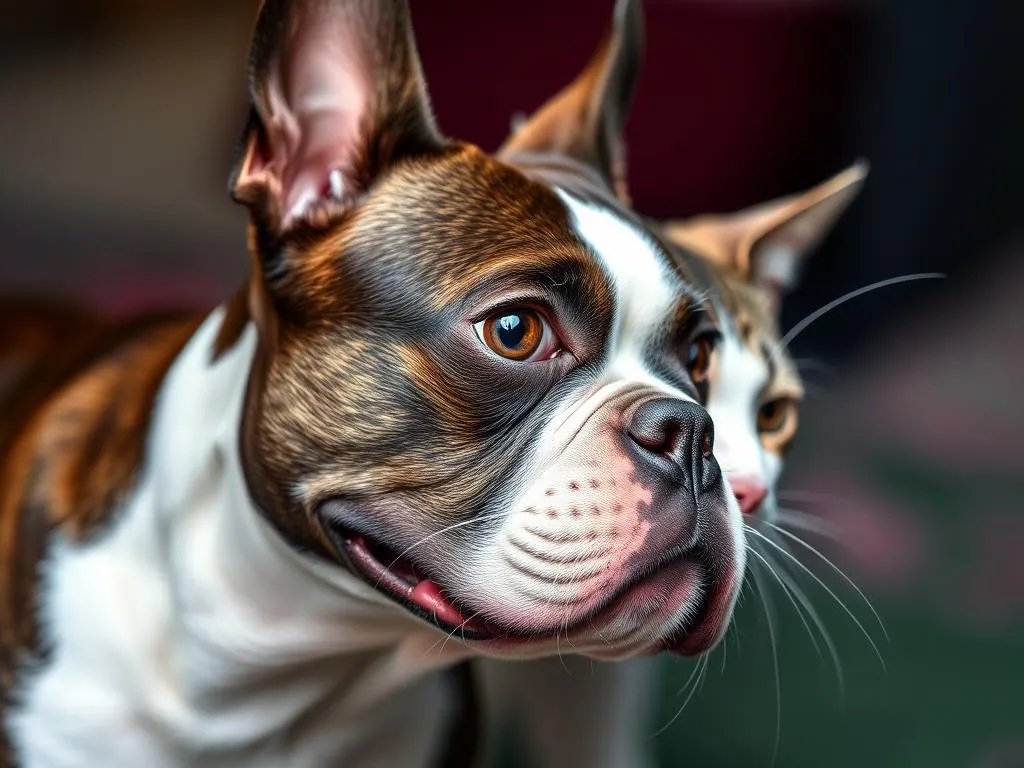
Introduction
When considering adding a new pet to the family, many potential pet owners ponder the compatibility of different animals. One of the most pressing questions for dog lovers who also have or are considering cats is, “Will a Boston Terrier be good with a cat?” Understanding breed characteristics is essential for ensuring a harmonious household.
The Boston Terrier is a small, lively breed known for its friendly nature and unique appearance. With their tuxedo-like coat and charming personalities, these dogs have won the hearts of many. But how do they fare in homes with feline companions? This article explores the compatibility of Boston Terriers with cats, examining their traits, behaviors, and tips for successful integration.
Understanding the Boston Terrier
Overview of the Breed
The Boston Terrier, often referred to as the “American Gentleman,” originated in the late 19th century in Boston, Massachusetts. This breed was developed from a mix of the English Bulldog and the now-extinct White English Terrier, resulting in a small, sturdy dog with a distinctive flat face.
Physically, Boston Terriers typically weigh between 10 to 25 pounds and stand about 15 to 17 inches tall. Their coat is short and smooth, coming in various colors, including black, brindle, and seal, often with white markings. The breed is known for its expressive eyes and compact build, making it an appealing companion.
In terms of temperament, Boston Terriers are affectionate, intelligent, and eager to please. They are known for their playful and lively personalities, making them great family pets. However, their social nature means that their compatibility with other animals, particularly cats, can vary based on individual temperament and early socialization.
Common Behavior Traits
Boston Terriers are energetic and playful, often displaying a love for games and activities. Their energy levels are moderate; they enjoy a good romp in the yard or a walk around the neighborhood, but they can also appreciate a cozy time indoors.
Socialization is another key aspect of the Boston Terrier’s personality. They generally get along well with other dogs and pets when properly introduced, thanks to their friendly disposition. However, they can be territorial and may exhibit stubbornness if not trained adequately. Understanding these behavior traits is crucial when assessing their compatibility with cats.
Factors Influencing Dog-Cat Compatibility
Dog Temperament
The temperament of a Boston Terrier can significantly influence its interactions with a cat. Generally, Boston Terriers are friendly and curious, traits that can lead to positive relationships with feline companions. However, their playful and sometimes boisterous nature might overwhelm a more timid cat.
Specific traits in Boston Terriers, such as their strong prey drive, can also impact compatibility. While not as pronounced as in some larger breeds, a Boston’s instinct to chase smaller animals should not be underestimated.
Cat Temperament
Cats have diverse personalities, ranging from aloof and independent to social and affectionate. Understanding a cat’s temperament is crucial in determining how it will interact with a Boston Terrier.
For instance, a confident and outgoing cat may enjoy the company of a playful dog, while a shy or anxious cat might feel threatened. Additionally, the introduction process can be pivotal; a calm and patient cat may adapt better to a new canine sibling than a high-strung feline.
Introduction Process
A successful introduction between a dog and a cat is critical for fostering a peaceful relationship. Proper introductions can make all the difference in ensuring that both pets feel secure and comfortable.
- Separate Spaces: Initially, keep the dog and cat in separate areas of the home to allow them to adjust to each other’s scents.
- Controlled Meetings: After a few days, allow them to see each other through a baby gate or a cracked door. Observe their reactions.
- Short Interactions: Gradually increase the length of their interactions while keeping the dog leashed during initial meetings.
- Positive Reinforcement: Reward both pets for calm behavior during interactions to encourage good associations.
Following these steps can help establish a peaceful coexistence in the household.
Real-Life Experiences with Boston Terriers and Cats
Success Stories
Many pet owners have shared positive experiences of Boston Terriers living harmoniously with cats. For instance, one owner reported that their Boston Terrier, Max, quickly bonded with their cat, Bella. Max was introduced to Bella as a puppy, and his playful nature intrigued her. With time, they began to play together, often seen chasing each other around the house.
Owners often emphasize the importance of early socialization and positive reinforcement during the introduction process. They recommend allowing both pets to observe each other from a distance and ensuring each pet has its own space to retreat to when needed.
Challenges Faced
While many Boston Terriers get along beautifully with cats, challenges can arise. Some owners have reported instances of jealousy, especially if the dog feels that its human’s attention is divided. A Boston’s playful energy might be misinterpreted by a cat as aggression, leading to hissing or swatting.
Additionally, behavioral issues such as chasing may occur if the dog has not been properly trained or socialized. Understanding these potential challenges is crucial for prospective pet owners and can lead to implementing timely solutions.
Training and Socialization Tips
Training Strategies for Boston Terriers
Training is an essential component of ensuring that a Boston Terrier can coexist peacefully with a cat. Basic obedience training should focus on commands such as “sit,” “stay,” and “leave it,” which can help manage the dog’s behavior around the cat.
- Positive Reinforcement: Use treats and praise to reward desired behaviors, reinforcing a calm demeanor around the cat.
- Desensitization: Gradually expose the dog to the cat’s presence during training sessions, rewarding calm behavior.
- Redirecting Energy: Provide plenty of physical and mental stimulation through walks, playtime, and puzzle toys to prevent excess energy from translating into unwanted behavior.
Socialization Techniques
Socialization is particularly important during a Boston Terrier’s puppy stage. Exposing them to different environments, people, and animals can foster a well-rounded temperament.
- Early Exposure: Introduce your puppy to various pets, including cats, in a controlled manner.
- Supervised Interactions: Always supervise interactions between the dog and cat initially, gradually allowing more freedom as they become accustomed to each other.
- Regular Routine: Establish a routine that includes interactions with both pets, helping them feel secure and comfortable in each other’s presence.
By employing these training and socialization techniques, pet owners can improve the chances of a positive relationship between their Boston Terrier and cat.
Conclusion
In conclusion, the question of “Will a Boston Terrier be good with a cat?” does not have a one-size-fits-all answer. While Boston Terriers generally possess friendly and playful traits, individual personality differences in both dogs and cats play a vital role in their compatibility.
Understanding the breed’s characteristics, recognizing the importance of proper introductions, and employing effective training and socialization techniques can help foster a harmonious environment. Ultimately, the key lies in considering the unique personalities of each pet rather than relying solely on breed stereotypes. A well-matched pair can bring joy and companionship to a household, making it worthwhile to explore the potential for a Boston Terrier and a cat to coexist peacefully.









